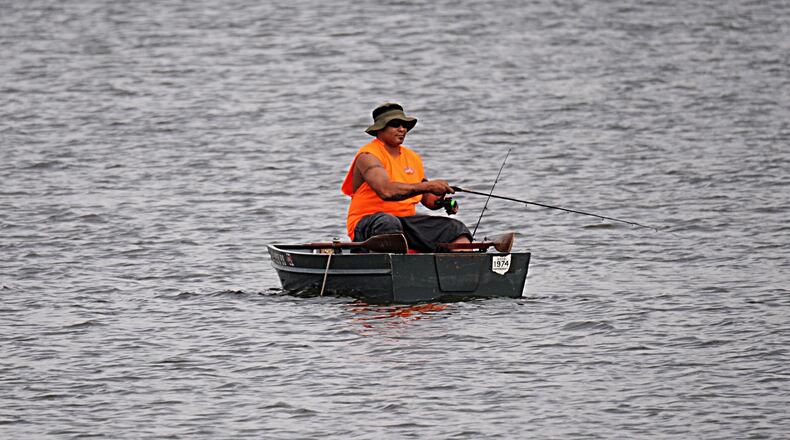Moon Time: The Mock Orange Moon became the new Strawberry and Raspberry Moon on May 25. On the next day, lunar perigee (when the moon is closest to Earth) occurs. Rising after dawn and setting around midnight, the new moon is overhead in the middle of the day.
RELATED: Springfield weather
Sun Time: The sun reaches a declination of 21 degrees 54 minutes by the end of May, a little more than 90 percent of the way to solstice.
Planet Time: Find Mars close to the new crescent moon on May 27.
Star Time: At 10 o'clock at night, Virgo will be due south, and bright Arcturus, the largest star in the central sky, will be almost overhead. When you do morning chores, you'll see the Milky Way above you and the Great Square moving in from the East, fertile Pisces right behind it. To the far west, the spring planting star, Arcturus, is the brightest setting star.
Weather Time: The May 24 Front: Mild temperatures often occur several days after this front moves toward the Atlantic Ocean, but new moon on the 25th and perigee on the 26th increase the chances for frost in the North and for chilly weather in the South.
The May 29 Front: Rain is often heavy as the final front of May approaches. When this high moves away, however, it usually leaves sunny, dry conditions. Summer warmth typically begins several days later
ERIC ELWELL: Barrier discovered circling planet created by man-made radio waves
Zeitgebers: Events in Nature that Tell the Time of Year: When flea beetles are feeding in the vegetable garden, cedar waxwings will be migrating through your land, and fiddler crabs will be emerging from their tunnels in the estuaries of the South.
When you see the first brown “June” bug clinging to your screen door, look for young fireflies glowing in the night grass, and when you smell the locust flowers opening, the first mulberries will be ready for mulberry pie. In the wetlands, wild iris will be in bloom.
When you see cottonwood cotton floating in the wind, then deer will be giving birth, and pollen from grasses will be reaching its peak.
Field and Garden Time: Blackberries are blooming along roadsides of the Lower Midwest. That is when sunflowers are in full bloom in California, and spring wheat and oats are just about all planted in the North
When you see nettles waist high, then check the garden for cutworms. And when Canadian thistles start to bud, it’s safe to plant your peppers, cantaloupes and cucumbers. But check for armyworms and corn borers in the fields.
When you hear spring crickets sing, look for leafhoppers in the garden and snapping turtle eggs along the rivers. Then when you see the first elderberries blooming, check for bean leaf beetles and alfalfa weevils in your field and garden.
Heat stress can slow the rate of gain in livestock. Protection from the weather, plenty of water and adequate feed and supplements may help to reduce weight loss.
WEATHER: WHIO Interactive Radar
Marketing Time: Memorial Day brings opportunities to sell spring flowers and bedding plants. And plan ahead to meet the demand for halal meat as Ramadan ends on June 25.
Mind and Body Time: Studies have shown that more events which people consider miraculous occur between May and September than in the other months. May through September are also the months during which the greatest weight loss in humans typically occurs. If you are going to diet in 2017, now is the time to start (even though if you lose weight, it may be a miracle).Your body will seek to put on more pounds once harvest is over and the leaves come down.
Creature Time: Late mornings offer the best lunar conditions for fishing as the week begins. When the moon turns new, fish closer to noon. When the barometer drops in advance of the May 29 and June 2 cool fronts, expect even more angling success in the mornings. But birders may find slim pickings this week: Most warblers have flown north by this time of the month, and almost all other spring migrants have either arrived or passed through the area. Spring turkey hunting closes throughout much of the region; update your turkey journal, noting which dates and weather conditions were the most successful.
Journal
To the reservoir with my nephew John: One catfish and, ten bluegills yesterday, but nothing today. Hundreds of carp mating in the backstreams. Zebra swallowtail, tiger swallowtail, black swallowtail, and a viceroy seen. Pink, white, violet sweet rockets and cressleaf groundsel are the flowers in bloom.
The water-willow trees and the cottonwoods were shedding their cotton, tufts gathering in the sloughs. Bullfrogs were calling off and on. I saw a yellow-headed warbler as we got close to the fen on the north side of the lake, the first I’ve ever seen. The geese were still loud, but bird activity much less this time than my last time out earlier in May. The canopy of leaves appears complete here, shading the areas closest to shore, mellowing the heat of the afternoon and settling me into leaving spring behind and finding summer.
About the Author
